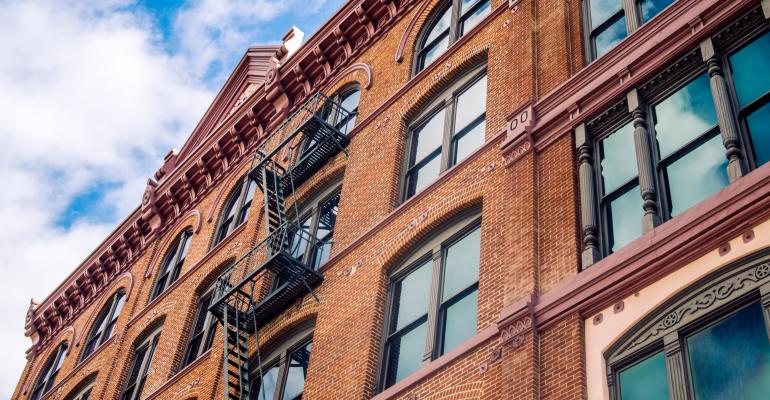Investors are still eager to buy apartment properties where they can raise the rents and achieve strong yields.
“There is a vast amount of capital in the multifamily space targeting value-add apartment properties,” says Rick Hurd, chief investment officer for Waterton, a real estate investment and property management firm.
Rents are growing slowly for apartment buildings overall, and that has led to a slowdown in property price growth. But investors can still find value-add opportunities where a few thousand dollars in renovations can justify higher rents.
“Value-added is still a viable investment strategy at this point in the cycle—and will continue to be for short term at least,” says Andrew Rybczynski, a consultant at research firm CoStar Portfolio Strategy.
The properties are out there
Demand remains high for older, less expensive apartment building in many parts of the country. “There is massive demand for well-located, decent apartment complexes with almost no new supply,” says Hurd.
At many of these properties, if the rents go up, they will still be far below the cost of living in a brand-new building. “You can still buy value-add apartments at attractive pricing, invest additional capital to upgrade them and still be significantly below replacement costs,” says Waterton.
Investors often find these properties in older, suburban submarkets around growing cities. “We are typically buying three-story, garden walk-ups,” says Matt Ferrari, head of acquisitions and dispositions for TruAmerica Multifamily, an investment firm which typically spends $5,000 to $10,000 per apartment on renovations. “It’s class-B, workforce housing. We don’t want to increase the rents to be out of reach.”
Other multifamily investors are finding buildings to buy and renovate in gentrifying neighborhoods closer to booming downtown areas. Rents are often rising in these markets as the development of luxury apartment projects spreads. “There is a shift of construction starts out of central business districts into more peripheral areas,” says Rybczynski. “That presents an opportunity for value-added investors that wasn’t there before.”
For example, in the New York metropolitan area, there are now 22,000 new apartment units under construction in what have historically been considered peripheral urban areas, including New Jersey, the Bronx, southwest Brooklyn and Queens. That compares to just 5,300 units under construction in the center of the city. Value-add investors can often benefit if they resist the temptation to go beyond the limits set by local rent laws.
“Waterton is definitely looking for well-located neighborhoods in our target markets that are going through gentrification,” says Hurd.
For example, Waterton just purchased Bay Village Apartments in Vallejo, Calif. “The entire city is designated an Opportunity Zone,” says Hurd. “We believe this area will see significant new investments and job growth due to the tax benefits and the proximity of Vallejo to lots of employment centers throughout the San Francisco area.”
Investors still spend big on value-add
Value-add investment has been a hot topic for several years now. “It’s still a lot of deals,” says Jim Costello, senior vice president for Real Capital Analytics (RCA), a New York City-based research firm.
Investors spent $31.9 billion to buy apartment properties in value-add transactions in the 12 months that ended in the third quarter of 2018, according to RCA. Overall, that has been roughly one-fifth of all the dollars spent to buy apartment properties over the past few years.
“Many institutions, private investors and local operators have raised significant capital to pursue the acquisition of value-add multifamily,” says Chris Espenshade, managing director at real estate services firm JLL.
Earlier in the recovery, investors could simply buy an apartment property and achieve an attractive yield on their investment, without needing to do much to reposition the property. “Rent growth is not bottoming out… but it’s a lot less than it was,” says CoStar’s Rybczynski. “That’s going to hurt your return from income.”
Rent growth for apartment buildings is expected to average roughly 2.5 percent in 2019—significantly less than a few years ago, according to estimates from several firms. Occupancy levels, however, remain high, despite the high volume of new construction this cycle.
Property values are not rising quickly relative to incomes in the multifamily sector. Cap rates on apartment buildings are near historic lows and are unlikely to get much lower. “In 2015, you could underwrite a big cap rate drop and get most of your yield from that,” says Rybczynski.
Meanwhile, investing in new development or paying for extensive renovations keeps getting riskier. So many developers are already opening new buildings that rents are barely growing in many downtown areas. Developers of luxury apartment buildings are often forced to offer tenants months of free rent.
Those facts keep investors returning to value-add opportunities. “It’s definitely harder to find properties,” says Ferrari. “But we are still talking about this because you can still buy assets at a significant discount to replacement costs.”

